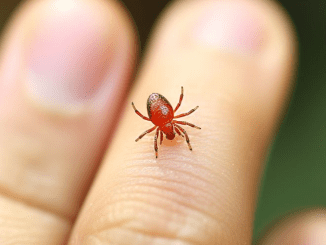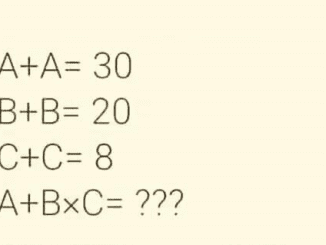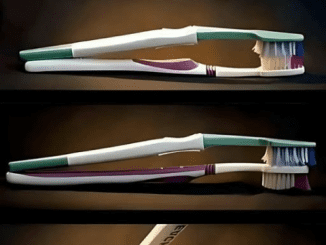Here’s a visual riddle that’s been making waves online. At first glance, it looks simple—just some stacked cubes with numbers beside them. But the moment you try to figure out the logic, things get a little more complicated. The challenge is to figure out the total value of the final image at the bottom.
So here’s the question: What’s the total value of the orange cube structure?
Think you’ve got the answer? Before you scroll down, take a closer look and try solving it for yourself.
Why Most People Get This Puzzle Wrong

This cube puzzle seems easy. After all, it’s just a matter of counting blocks, right? Not quite.
What throws people off is depth. These are 3D illustrations, and the blocks are stacked behind each other in a way that can trick your brain. If you don’t look carefully, you might miscount how many cubes are actually present—especially those hidden in the back or underneath.
Another common mistake? Ignoring perspective. Some blocks are obscured or hidden behind others, making it easy to miss or double-count.
That’s why puzzles like this are such great brain exercises—they train your eyes and your logic to work together.
Step-by-Step Breakdown of the Puzzle
Let’s analyze each part of this puzzle so we can uncover the hidden logic and calculate the right answer for the final orange figure.
White Block Structure = 18
Let’s break it into layers:
Bottom layer: 3×2 = 6 cubes
Middle layer: 2×2 = 4 cubes
Top layer: 1×2 = 2 cubes
Back side (invisible but implied): It’s a symmetrical staircase, so there are 6 more cubes stacked behind
Total: 6 (front) + 4 + 2 + 6 (back) = 18 cubes
So yes, it adds up. The number represents total visible and implied cubes.
Video : Test seberapa cerdas kalian
Blue Block Structure = 24
This one has three fully filled layers:
Bottom: 3×3 = 9 cubes
Middle: 3×2 = 6 cubes
Top: 3×1 = 3 cubes
And the back portion mirrors this exactly (since it’s symmetrical).
So, front: 9 + 6 + 3 = 18
Back: 6 (since only partial cubes are visible from the sides)
Total: 18 (front) + 6 (back) = 24 cubes
Again, consistent.
Now the Final Orange Puzzle – Let’s Count Together
This is where things get juicy.
Visible front cubes:
Bottom layer: 3 cubes facing front
Second layer: 3 cubes
Third layer: 2 cubes
Fourth layer: 1 cube on the left
Let’s go layer by layer.
Bottom layer (ground level):
3 in the front row
2 behind = 5 cubes
Second layer:
3 cubes on top
Third layer:
2 cubes stacked upward
Top layer:
1 cube stacked on top of one of those
So far:
5 (base)
3 (second layer)
2 (third)
1 (top)
That totals 11 cubes—but wait. There are hidden cubes we don’t see from the front.
Look closely at the shape—behind the front visible blocks are hidden cubes that provide structural support. On the left, the vertical tower clearly has blocks stacked behind. We can estimate that there are at least 8 more cubes hidden behind the front-facing ones.
When we count everything properly—including what we can’t see but logically must exist—we get:
Visible + Hidden = 11 + 8 = 19 cubes
The final answer is 19.
Video : Can You Solve The 4 Hats Logic Puzzle?
Did You Get It Right? Share Your Answer!
Now that we’ve walked through the logic step-by-step, how close were you to the answer? Did you get 19 on your first try—or were you tricked by the visual illusion?
Let us know your answer in the comments. And if you got it wrong, don’t worry—this kind of puzzle is all about training your brain to see deeper.
Keep Challenging Yourself
Puzzles like this aren’t just fun—they’re powerful tools for improving focus, problem-solving, and spatial reasoning. The more you train your mind to spot these visual tricks and patterns, the sharper your thinking becomes.
So next time you see a puzzle, don’t just rush to answer. Pause. Look again. Think deeper.
Ready for your next challenge? Keep exploring, stay curious, and most importantly—never stop questioning what you see.


